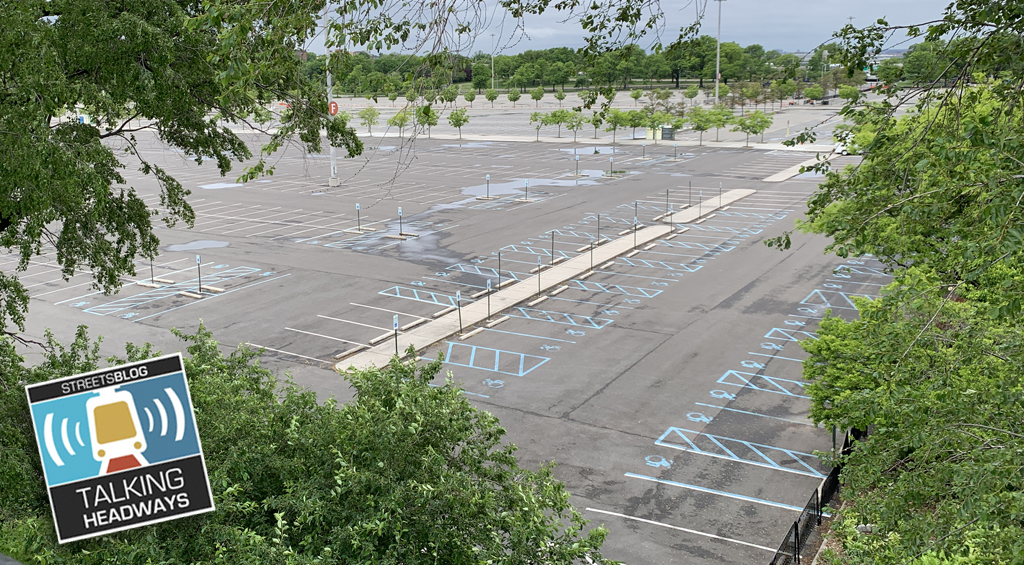Is this a loophole big enough to drive a diesel truck through?
Minnesota's 2023 law to reduce greenhouse emissions from the state’s biggest climate pollution sector — transportation has been heralded as a major step toward creating accountability for an agency that has long treated climate and pollution impacts as an afterthought.
But the law — also known as the Transportation Greenhouse Gas Emissions Impact Assessment — left to the discretion of the Minnesota Department of Transportation commissioner how emissions will be measured and mitigated. With the rule set to take effect in a few months and details still being decided, it's worth asking whether the law will ultimately prove effective at driving down emissions — an especially worthy question given that state action on climate is more important than ever as President-elect Trump has pledged to dismantle regulations to battle climate change.
Let's dig in:
Background
The Minnesota law, modeled after a similar law in Colorado, requires the Minnesota DOT to create a process to measure whether planned highway projects align with the state’s goals of reducing vehicle miles traveled and achieving net zero emissions by 2050. Even as more drivers shift to electric vehicles, achieving climate goals and averting impacts will not be possible without also rapidly reducing driving and increasing trips by transit, walking and biking.
The new climate rule specifically targets major highway projects that increase capacity for cars. For such projects, MnDOT would be required to measure the long-term impact on greenhouse gas emissions, and assess whether the project is consistent with the state’s climate goals. If not, the project can only proceed if MnDOT undertakes a combination of two actions:
- It can alter the project to reduce projected emissions
- It can expand the project budget to include additional projects to mitigate the highway’s emissions impact, to be prioritized within the impacted area
The law was subsequently amended during the 2024 legislative session to implement the greenhouse gas assessment in two phases:
- Beginning on Feb. 1, 2025: newly planned highway expansion will be required to comply with the law.
- Starting on Aug. 1, 2027: MnDOT will be required to evaluate the climate impact of their entire portfolio of planned highway projects to ensure that it is in line with the state’s climate goals.
Additional compromises were made to get the bill over the finish line. The law grandfathered in exemptions for previously planned projects, allowing some, like State Highway 252's expansion, to proceed, allowing for the demolition of dozens of homes and businesses in two of Minnesota’s most racially diverse suburbs.
In addition, because the law only applies to highway expansion until 2027, projects that rebuild highways with the same number of lanes will be exempt until phase 2 takes effect.
Critical upcoming decisions
Like many climate policies, the law’s impact on transportation spending and resulting emissions will come down to the details of its implementation. The legislature created a technical advisory committee to guide the design and administration of the highway climate law. The committee is composed of nine members, and includes county engineers, transportation engineering firms, academia, and state agencies.
The committee continues to meet regularly to develop recommendations for the MnDOT commissioner about how the greenhouse gas assessment should be structured. Recommendations are due by January in time for final implementation in February. Climate advocates and highway funding groups are both closely monitoring these developments.
Five key decisions will decide if the law lives up to it’s nation-leading potential:
How will MnDOT measure emissions from highway projects?
For decades, departments of transportation have used questionable modeling techniques to justify investing billions in highway expansion projects. These models largely ignore induced demand, a term for the additional driving that occurs following roadway expansion. Highway planners often claim that highway expansion projects will have minimal pollution impacts (this 2021 MnDOT report provides an example), based on the myth that highway widening reduces pollution.
If MnDOT continues to use existing models to measure the VMT and emissions impacts of projects, it will grossly underestimate climate impacts. As an alternative, the committee has considered using the SHIFT calculator, developed by the Rocky Mountain Institute, which provides a rudimentary estimate of the increased emissions from highway expansion resulting from induced demand. In the long-term, MnDOT is in the process of developing a new travel demand model that accounts for induced demand, but the details of the new model are unknown.
How will MnDOT measure emissions impact from mitigation projects?
The committee will also need to create a process to measure the extent to which mitigation projects reduce VMT and greenhouse gas emissions. For example, what is the emissions impact of building a new bus rapid transit line, or a protected bikeway, or upzoning to increase housing density near transit? It is critical that these estimates are conservative to ensure that emissions are truly mitigated.
In order for these measures to be accurate, models must consider the impact of reduced demand, commonly referred to as “traffic evaporation.” Reduced demand is the inverse of induced demand. When roadways are removed or reduced, people in the area tend to drive less and walk, bike, telework, and take public transportation more. This phenomena is increased when road space is converted into new uses that make alternative modes of transportation more convenient. Unfortunately, reduced demand is not accounted for in the existing MnDOT model, or the SHIFT calculator, which only measures induced travel.
How will mitigation projects be funded and budgeted for?
The committee will also need to navigate restrictions on the eligible uses of state highway dollars. Minnesota state law requires that the state’s trunk highway fund, which is largely funded by gas tax revenue, be spent on “highway purposes.” That definition has historically been interpreted to include only infrastructure for cars and trucks, excluding public transit, bicycle and pedestrian infrastructure. Without flexibility in how trunk highway dollars can be spent, it will be difficult for MnDOT to fund mitigation projects to offset emissions. The legislature could alleviate this issue by clarifying the definition of highway purpose to also include mitigation projects. It remains to be seen whether the committee will include such a step in their recommendations.
What mitigation projects will be eligible to offset emissions?
The law originally listed nine project types that are eligible for mitigating the emissions of highway projects, including increasing transit service, improving walking and biking infrastructure, doing proper travel demand management, and restoring natural areas, among others. However the bill authors did not include projects that reduce lanes among the eligible mitigation projects. This oversight must be addressed. Such projects, like road diets and highway-to-boulevard conversions, have reliably reduced vehicle miles traveled and incentivized the use of cleaner transportation modes.
If the goal is to reduce, not just stabilize, VMT and emissions, if a lane is added somewhere, lanes must be removed elsewhere. MnDOT also has much more control over such projects compared to zoning or natural systems restoration. This would also address the concern that people won’t use new transit and bike lanes because it would incentivize non-driving alternatives as opposed to simply making them an option.
What accountability measures will be used to ensure that projects are accurately achieving the forecasted outcomes?
It remains to be seen what, if any, accountability measures will be implemented to ensure that projections for highway emissions and the emissions of mitigation projects reflect reality. For example, what if induced demand was not fully accounted for in traffic modeling, or what if zoning changes are never acted on, or not enough people use a new bikeway?
There is also a need for guidelines to ensure that mitigation projects are completed in tandem with the highway projects they aim to mitigate, similar to wetland mitigation banking. For example, if a transit line is delayed for years past the highway expansion’s opening, emissions will not be mitigated. Without such protections, MnDOT runs the risk of missing critical climate targets.
Minnesota can set a national standard
The decisions made in the coming months on how to implement the greenhouse gas impact assessment for highways will have ramifications across the country; lessons learned from implementation will hold even more weight as states craft similar laws of their own.
State DOT’s have spent decades prioritizing infrastructure that makes driving as easy and convenient as possible, building bigger roads while making car-free mobility miserable. In order for the new climate law to be effective, it must result in MnDOT reversing direction, removing highway lanes while rapidly adding new transit, biking and pedestrian infrastructure.
If the law fails to accurately account for highway emissions and shift funding toward cleaner alternatives, precious time will be wasted. However, if the commissioner effectively puts the state’s transportation system on a path to net zero, other states will have a model to follow in addressing the county’s biggest emissions sector.






